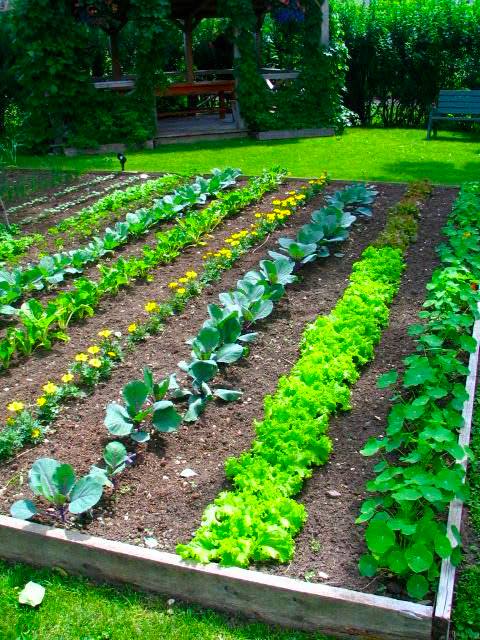Horticulture is a labor of love and dedication for many people, as they transform their love and energy into flowers, fruits, and vegetables. The wonderful thing about a garden is that anyone can start one. However, before you plant your first seed, there are some things you should know. The information in this article will help you get started with gardening.

Select perennials to reduce the amount of care your garden requires. Plants that return year after year usually require only a modicum of weeding and pruning. Edible perennials, such as asparagus, rhubarb, and sorrel, can provide an excellent salad addition for your household without causing too much work for you.
Use both well-matured compost and mulch in your garden. Compost will naturally help plants grow faster, taller, and healthier, and increase the yield of your vegetables. Mulch helps prevent the growth of weeds. Mulch also shades the ground around the roots of your plants, protecting them from heat and conserving water.
When removing and replanting perennials, it is important to replenish the soil as well. If you remove a large number of perennials, and then replant them without adding additional compost and soil, the bed will be lower, reducing drainage and air circulation. Also, the compost will replace nutrients that have been used up by previous growing seasons.
Don't assume that insects are to blame for all plants ailments. There are many things that can affect the health of a plant. The PH of the water you are using, the location of the plant (under shade vs direct sun), the amount of soil in the pot and several other reasons can be a determining factor.
Think carefully about how you are going to lay out your vegetable garden. Unlike most other gardens, you want to consider practicality over aesthetics for your vegetables. Some vegetables emit chemicals that can inhibit another's growth; some tall vegetables might overshadow small vegetables, which might not allow them to grow and ripen. Look at each vegetable plant's properties and carefully consider where to put it in your garden.
If you own fish, save your water. Changing https://www.sites.google.com/site/cvilletreeservice the water in a fish tank is a necessary chore when caring for these pets; however it can also prove to be useful for your garden. Dirty fish tank water is actually quite loaded with the nutrients plants crave. So when it comes time to change the water, instead of dumping that old water down the drain, use the water to fertilize your plants instead.
When horticulture, it is wise to rotate your crops, especially if you are growing more than one crop of fruits or vegetables in your garden each year. This helps to conserve the nutrients in the soil. It also helps to avoid diseases in the soil. Even with crop rotation, nutrients needed to be added back into the soil after each planting season.
Use hostas to brighten up a shady area. Hostas are the perfect plant to brighten up a shady area of your garden. They are grown primarily for their leaves, which range in color from deep blue-green to vivid yellow-green. Blooms are usually lavender, but Hosta Plantaginea features showy, fragrant white flowers. They are best grown in moist, rich soil which has been amended with plenty of compost. Large clumps can easily be divided in the Fall.
If you own fish, save your water. Changing the water in a fish tank is a necessary chore when caring for these pets; however it can also prove to be useful for your garden. Dirty fish tank water is actually quite loaded with the nutrients plants crave. So when it comes time to change the water, instead of dumping that old water down the drain, use the water to fertilize your plants instead.
When you have an abundance of seeds from your garden, a helpful way to store them away without drying them out is to use old, nylon stockings as a storage bag. After you add the seeds to the stocking, simply tie a knot at the top and hang the stockings in a warm, dark place to store until spring.
If you are gardening in containers, be sure each container has a drainage system to prevent water from pooling. Lining the bottom of a container with small rocks or pebbles can also help with water drainage for container horticulture. Allowing water to sit for extended periods can rot the root system of your plants.
Experiment with color pairings. Purple and yellow work very well together, and can be used to create either a warm or cool effect. For a warm effect, use more yellow flowers than purple, conversely, using mostly purple flowers will give you a cool, soothing effect. A mixture of tall purple delphiniums or penstemon, and lower growing yellow achillea gives a spectacular display.

Do not get rid of weeds by pulling them. This takes you a lot of time and they might grow back. If you notice an area with a lot of weeds, take a shovel and dig under it. Turn the soil over so that the weeds feed your seeds like manure would.
While working in the sun and dirt seems exciting enough, you should feel better now that you know how to do it properly. You can now apply your newly acquired knowledge to help you grow and maintain a much healthier, plentiful garden of plants and crops for you or your business.

